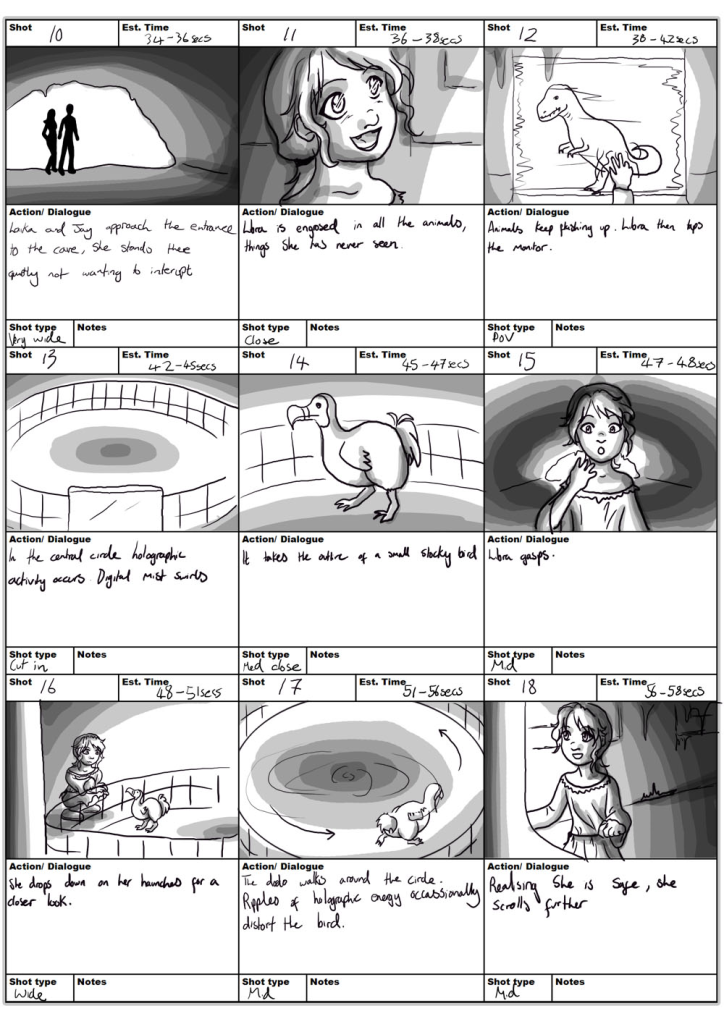The essence of storytelling lies in the narrative itself, irrespective of the style or method used to convey it. The fundamental principles that define a good story remain constant, highlighting the importance of the story over the means of its presentation.
Storyboards in Games

Storyboards are an essential tool used in the planning process of visual storytelling, such as films, animations, and video games. They allow creators to map out a character’s actions and the progression of scenes in a structured manner. By visually representing each key moment, artists and directors can explore the flow of the narrative, make important decisions about camera angles, composition, and pacing, and ensure that the emotional beats of the story are effectively captured. This iterative planning phase enables creators to refine their ideas and make adjustments before committing significant time and resources to the actual production and rendering of the final product. Ultimately, storyboards serve as a blueprint that guides the entire creative process.
Storyboards are primarily utilised in games to plan in-game cutscenes and key events that occur within the game world. Additionally, they serve as a more refined form of concept art, clearly depicting what players should experience as they navigate through the game environment.



Environmental Storytelling
Unlike other media, every element in games must be intentional, allowing us to direct this intention into the environment. For example, instead of having a mundane entrance to a building, we can create paths of blood or other signs of conflict and wear. This approach subconsciously establishes certain expectations for the player regarding what lies ahead. Furthermore, when used consistently throughout the game, these design choices can also mislead the player, creating a false sense of hope by not always confirming their expectations.

A more straightforward concept to understand is the ‘Boss Arena.’ Boss arenas are typically large, open spaces that allow a boss enemy to move freely and use dramatic attacks against the player. However, this design can inadvertently signal to the player that a boss fight is imminent, as the presence of a large open room suggests a forthcoming confrontation.

Choices Matter
Games with compelling narratives often empower players to make choices that significantly affect both the story and the game world. This design choice enhances immersion by allowing players to experience the consequences of their decisions. A prime example of this is ‘Dishonored,’ where a fundamental game mechanic influences the narrative’s outcome based on player actions. The act of killing characters alters the storyline, and the resolution of the game hinges on the choices players make regarding who to save and who to sacrifice.

Leave a Reply